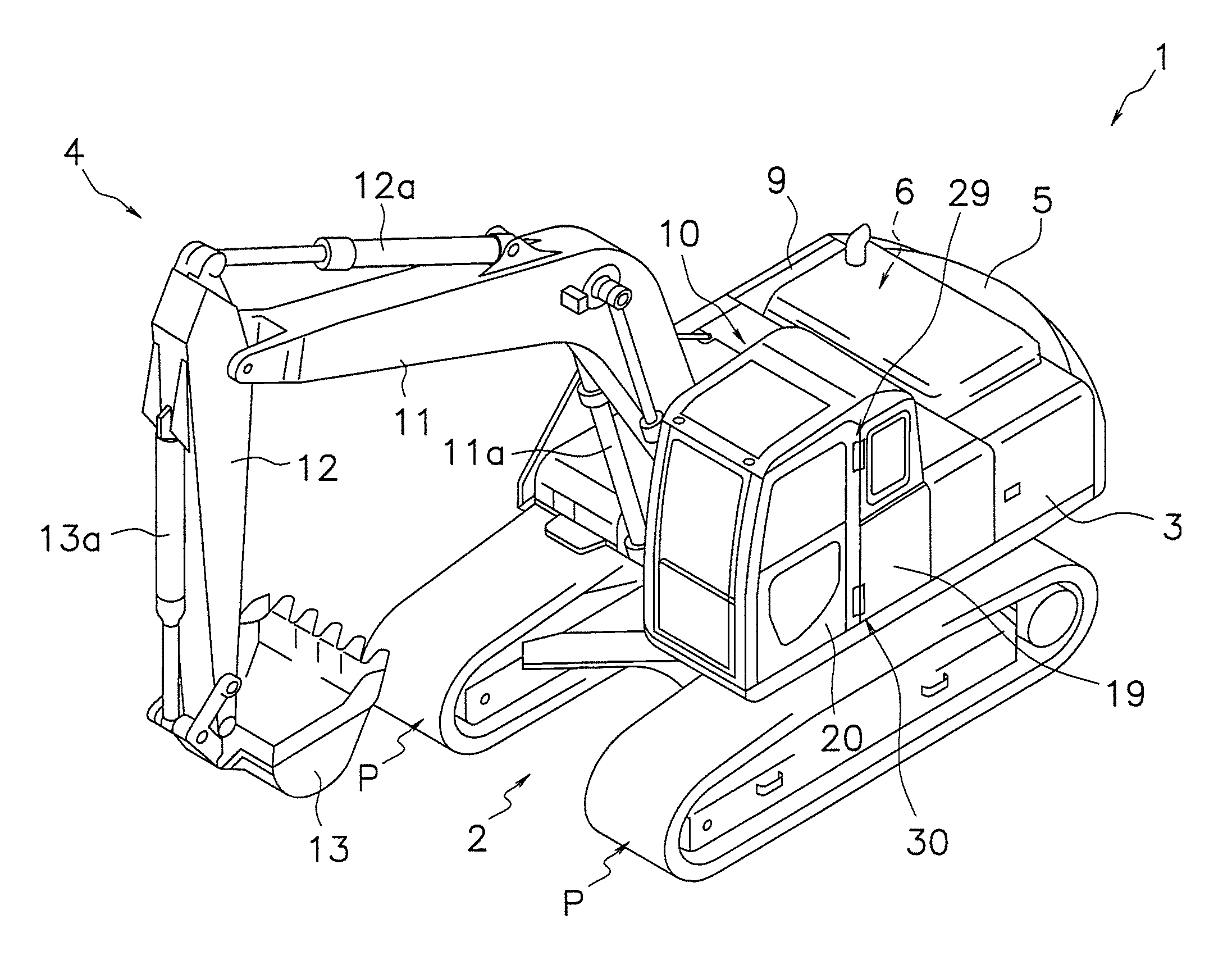Cab for construction machine
a construction machine and cab technology, applied in the direction of mechanical controls, roofs, doors, etc., can solve the problems of reducing the room space of the operator, the gap between the door and the wall is small, etc., and achieve the effect of reducing the width of the opening of the cab
- Summary
- Abstract
- Description
- Claims
- Application Information
AI Technical Summary
Benefits of technology
Problems solved by technology
Method used
Image
Examples
first embodiment
[0048]With reference to FIG. 1, the following description will describe a hydraulic excavator 1 that includes a cab for a construction machine to which a hinge structure according to one embodiment of the present invention is adopted.
Overall Construction of Hydraulic Excavator 1
[0049]The hydraulic excavator 1 according to this embodiment includes a lower traveling unit 2, a revolving base 3, a working unit 4, a counterweight 5, an engine room 6, an equipment compartment 9, and a cab 10, as shown in FIG. 1.
[0050]The lower traveling unit 2 drives crawler belts P that are wounded on the left and right sides of the lower traveling unit 2 relative to the advance direction so that the hydraulic excavator 1 travels frontward and rearward. The revolving base 3 is revolvably mounted on the upper part of the lower traveling unit 2.
[0051]The revolving base 3 can revolve in either direction on the lower traveling unit 2. The working unit 4, the counterweight 5, the engine 6, and the cab 10 are ...
referential example
[0113]In the case where double-shaft hinges are used, if the pivot angles are not regulated when the door is fully opened 180 degrees from the closed position, positioning of the striker relative to the engaging member of the wall may be unstable. For this reason, there is a possibility that the striker of the door cannot engage with the engaging member of the wall at a certain position.
[0114]FIG. 14 is a schematic view showing an opening / closing structure of a door that includes the double-shaft hinges.
[0115]The double-shaft hinge 133 includes a first pivot shaft 136 that is arranged in a side wall 119 of a machine, and a second pivot shaft 137 that is arranged in the end of a door 120. A striker 127 is arranged on the door 120. It is expected that, when the door 120 is opened about 180 degrees from the closed position and is orientated in parallel to the side wall 119, the striker 127 is positioned at the position where the striker 127 can engage with the engagement member 126.
[01...
PUM
 Login to View More
Login to View More Abstract
Description
Claims
Application Information
 Login to View More
Login to View More - R&D
- Intellectual Property
- Life Sciences
- Materials
- Tech Scout
- Unparalleled Data Quality
- Higher Quality Content
- 60% Fewer Hallucinations
Browse by: Latest US Patents, China's latest patents, Technical Efficacy Thesaurus, Application Domain, Technology Topic, Popular Technical Reports.
© 2025 PatSnap. All rights reserved.Legal|Privacy policy|Modern Slavery Act Transparency Statement|Sitemap|About US| Contact US: help@patsnap.com



